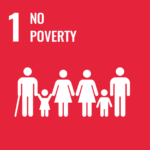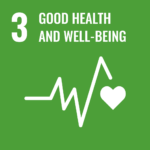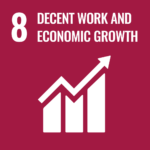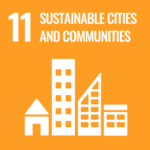What is homelessness?
Homelessness represents the absence of a home. It can be defined as lacking a physical domain (adequate dwelling or space over which a person or family can exercise exclusive possession), a social domain (being able to maintain privacy and enjoy relations), and a legal domain (having a legal title to occupation).
International benchmarks: the four states of homelessness:
Rooflessness
Houselessness
Insecure Housing
Inadequate Housing
HOME has adopted a typology of homelessness and housing exclusion known as ETHOS. It standardizes the definition of homelessness and takes the four concepts, further dividing them into 13 operational categories. These can be used for policy purposes, such as mapping of homelessness, and developing, monitoring and evaluating policies.
The ETHOS typology begins with understanding there are three domains which constitute a “home,” the absence of which indicates homelessness. Having a home can be understood as: having an adequate dwelling (or space) over which a person and their family can exercise exclusive possession (physical domain); being able to maintain privacy and enjoy relations (social domain); and having a legal title to occupation (legal domain).
Homeless
Roofless
Houseless
01 People living rough
Public space or external space
Living in the streets or public spaces, without a shelter that can be defined as living quarters.
02 People staying in a night shelter
Night shelter
People with no usual place of residence who make use of overnight shelter, low threshold shelter
03 People in accommodation for the homeless
- Homeless hostel
- Temporary accommodation
- Transitional supported accommodation
Where the period of stay is intended to be short term
04 People in a women’s shelter
Women’s shelter accommodation
Women accommodated due to experience of domestic violence and where the period of stay is intended to be short term
05 People in accommodation for immigrants
1. Temporary accommodation, reception centers
Immigrants in reception or short-term
2. Migrant workers’ accommodation
Accommodation due to their immigrant status
06 People due to be released from institutions
1. Penal institutions
No housing available prior to release
2. Medical institutions
No housing identified (e.g. by 18th birthday)
3. Children’s institutions/ homes
Stay longer than needed due to lack of housing
07 People receiving longer-term support (due to homelessness)
1. Residential care for older homeless people
Long stay accommodation with care for formerly
2. Supported accommodation for formerly homeless person
Homeless people (normally more than one year)
Housing Exclusion
Insecure
Inadequate
08 People living in insecure accommodation
1. Temporarily with family/friends
Living in conventional housing but not the usual or place of residence due to lack of housing
2. No legal (sub) tenancy
Occupation of dwelling with no legal tenancy
illegal occupation of a dwelling
3. Illegal occupation of land
Occupation of land with no legal rights
09 People living under threat of eviction
1. Legal orders enforced (rented)
Where orders for eviction are operative
2. Repossession orders (owned)
Where mortgagee has legal order to re-possess
10 People living under threat of violence
Police recorded incidents
Where police action is taken to ensure place of safety for victims of domestic violence
11 People living in temporary/non-conventional structures
1. Mobile homes
Not intended as place of usual residence
2. Non-conventional building
Makeshift shelter, shack or shanty
3. Temporary structure
Semi-permanent structure hut or cabin
12 People living in unfit housing
Occupied dwelling unfit for habitation
Defined as unfit for habitation by national legislation or building regulations
13 People living in extreme overcrowding
Highest national norm of overcrowding
Defined as exceeding national density standard for floor-space or useable rooms
as of December 31, 2022
HOME’s data records only people with whom HOME has had direct contact or who have been confirmed by a reliable third-party source. The total population is likely to be understated based on the ‘hidden homeless’ (people temporarily living) with others but without guarantee of continued residency or immediate prospects for accessing permanent housing) who are harder to find or identify.
Causes of homelessness
Homelessness usually results from the cumulative impact of a number of factors rather than a single cause. These factors can include:
01.
Structural factors are economic and societal issues that affect opportunities and social environments for individuals, for example the lack of adequate income, access to affordable housing and healthcare, discrimination.
02.
Poverty and homelessness are inextricably linked. People who are impoverished are frequently unable to pay for necessities such as housing, food, childcare, healthcare, and education.
03.
A shortage of housing that is affordable, safe and stable directly contributes to homelessness. Compounding this issue is discrimination.
04.
Failures occur when other systems of care and support fail, requiring vulnerable people to turn to the homelessness sector, when other mainstream services could have prevented this need. Examples include difficult transitions from child welfare, inadequate discharge planning for people leaving hospitals, corrections, mental health and addictions facilities.
05.
Personal circumstances and relational factors apply homelessness, and may include traumatic events (e.g. job loss), personal crisis (e.g. family break-up), mental health and addictions challenges (including brain injury and fetal alcohol syndrome), which can be both a cause and consequence of homelessness and physical health problems or disabilities.
06.
Domestic Violence and homelessness are undeniably connected. For example, women who experience violence are often forced to choose between abusive relationships and homelessness. Young people who are victims of sexual, physical or psychological abuse often end up experiencing homelessness. Seniors who are experiencing abuse and neglect are increasingly at risk of homelessness.
Why homelessness must end
We believe ending homelessness should be a basic principle or value with which everyone agrees. It should be sacred. And yet it is not, otherwise homelessness wouldn’t exist. Homelessness should be ended because:
Homelessness is a human tragedy
Homelessness leads to feelings of uncertainty, vulnerability, and isolation. People experiencing homelessness suffer great physical and mental stress, often including chronic pain. Homeless people are three times more likely to die prematurely. Homeless adults are more likely to experience psychiatric disorders and mental illness and use tobacco and other substances. People who are homeless face increased chances of being victims of crime, frequently experiencing physical violence, verbal abuse, sexual assault, rape and other traumatic events. The human tragedies of each person experiencing homelessness are significant.
Homelessness violates at least 10 basic human rights
The Universal Declaration of Human Rights states “recognition of the inherent dignity and of the equal and inalienable rights of all members of the human family is the foundation of freedom, justice and peace.” Homelessness violates 10 human rights, including: Right to Life, Liberty and Security of the Person; Right to be Free from Cruel, Inhumane or Degrading Treatment or Punishment; Right to Freedom from Discrimination; Right to Privacy; Right to Freedom of Expression; Right to Freedom of Association; Right to Vote; Right to Social Security; Right to Adequate Standard of Living; and Right to Health. Article 11 of the International Covenant on Economic, Social and Cultural Rights recognises “the right of everyone to an adequate standard of living for himself and his family, including adequate food, clothing and housing.”
Homelessness is an economic problem
Persons experiencing homelessness are high consumers of public resources, generating expense, rather than income, for communities. This consumption includes the use of emergency shelters and community supports, but also accounts for the increased costs of emergency services, healthcare, financial assistance, and the criminal justice system. Failure to address homelessness even in incremental ways compounds the burden. For example, the cost of housing someone in jail, hospitals, or the shelter system compared to housing them in social or supportive housing is materially higher for the taxpayer. Homelessness can have wider reaching economic impacts. For example, in a tourism-driven economy, homelessness can be a deterrent to visitors. Ending homelessness reduces the burden on the taxpayer as well as on the person experiencing homelessness.
Homelessness is immoral
As the gap between rich and poor increases, so does the number of people experiencing homelessness. Yet, homelessness is not an intractable problem. In most cases, homelessness can be prevented, and in every case, it can be ended permanently. That homelessness exists points to the moral crisis of our generation.
Homelessness represents rampant social injustices
Homelessness is a barometer of social justice that reflects a serious problem in our society. The root causes of a person’s homelessness may vary and the issues surrounding homelessness are complex. Typically, however, the absence of one or more of the following elements—human rights, access, participation, and equity—are found in all homeless situations. This confirms the existence of social injustices. In Bermuda, there are clear links between systemic racism and homelessness. For example, Black families historically and systemically faced discrimination in housing, criminal justice, child welfare and education. This, in turn, makes it harder for Black people to leave a state of homelessness.
Homelessness jeopardizes the achievement of seven of the UN Sustainable Development Goals
Failure to tackle homelessness will prevent the achievement of the following SDGs: No Poverty (1); Zero Hunger (2), Good Health and Well-Being (3), Decent Work and Economic Growth (8), Industry Innovation and Infrastructure (9), Sustainable Cities and Communities (11), and Partnerships (17).
Rough sleepers
More and more people are sleeping rough. It’s a vicious cycle. The longer someone spends rough sleeping, the more likely it is that they will develop complex needs and the harder they will find it to move on from homelessness and rebuild their lives. It is also more likely their health deteriorates and their life expectancy is shortened.
At HOME, our initial focus is on getting rough sleepers inside and enabling access to the support services they need. In developing relationships with this chronically vulnerable population we have encountered extreme human suffering. An 80-year-old man who has slept outside for over 30 years. A terminally ill person living out their last months in a doorway. Women who have been sexually assaulted while rough sleeping.
Our research adds to existing evidence demonstrating the unacceptable levels of abuse and harm caused to people sleeping rough on the streets. One of our immediate priorities is on rough sleepers.
Plan to end homelessness
HOME is working directly with the Ministry of Social Development & Seniors, along with the wider government, non-governmental agencies, charities, philanthropies, religious and wider community, to create a collaborative, single plan to end homelessness in Bermuda.
Supplemented by data and commissioned research, the plan includes input from a wide cross-section of stakeholders, including, most importantly, people experiencing homelessness, as well as academic evidence of effective homelessness solutions. The plan will set out a framework and roadmap to end homelessness for good.
HOME will assist in development of the plan, which will require significant interagency coordination and cooperation. Our target is to ensure no people are homeless by 2027 and to sustainably end homelessness by 2032. The plan and its progress will be on public record.
Contact Us.
Have questions? Please send us a message.





